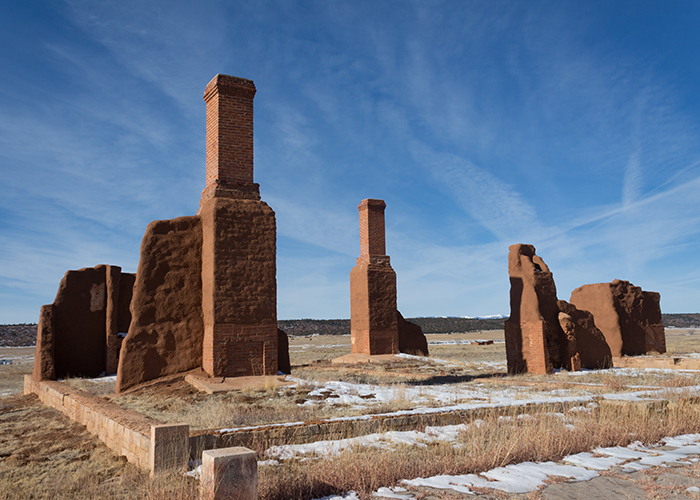 Previous Day |
Santa Fe, NM → Fort Union NM → Albuquerque, NM 265.0 mi (426.5 km) |
 More 2020 Adventures |
Storm’s a-comin’, everyone!
And just as Pecos Bill could lasso a whirlwind to ride, I too must make like the wind to see two neat national park sites before the next blizzard rolls in tonight! In fact, my original destination, Capulin Volcano National Monument was closed due to weather damage! With as much speed as I would whip up, I headed off into the deceptively beautiful morning to my new first stop: Fort Union National Monument!
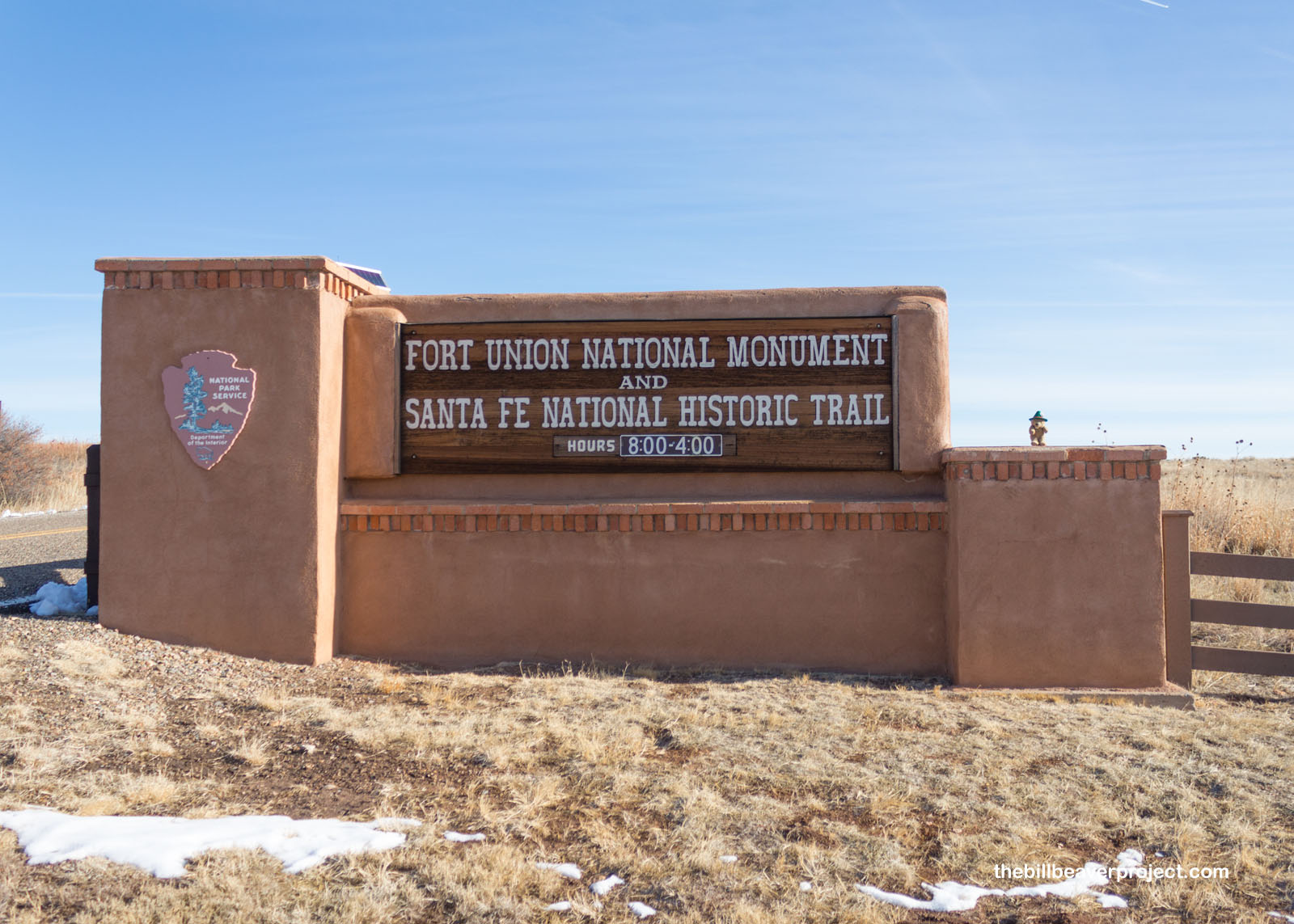 |
Once the USA won the Mexican-American War, the Stars and Stripes gained control over a whole new New Mexican territory, and the first and foremost priority after that was to set up a military presence there. At first, this was a super scattered endeavor, with tiny outposts all across the territory, but Lt. Col. Edwin V. Sumner decided to consolidate them all into one. For that reason, in 1851, he named his new fort Union and positioned it at the intersection of the Mountain and Cimarron Branches of the newly created Santa Fe Trail!
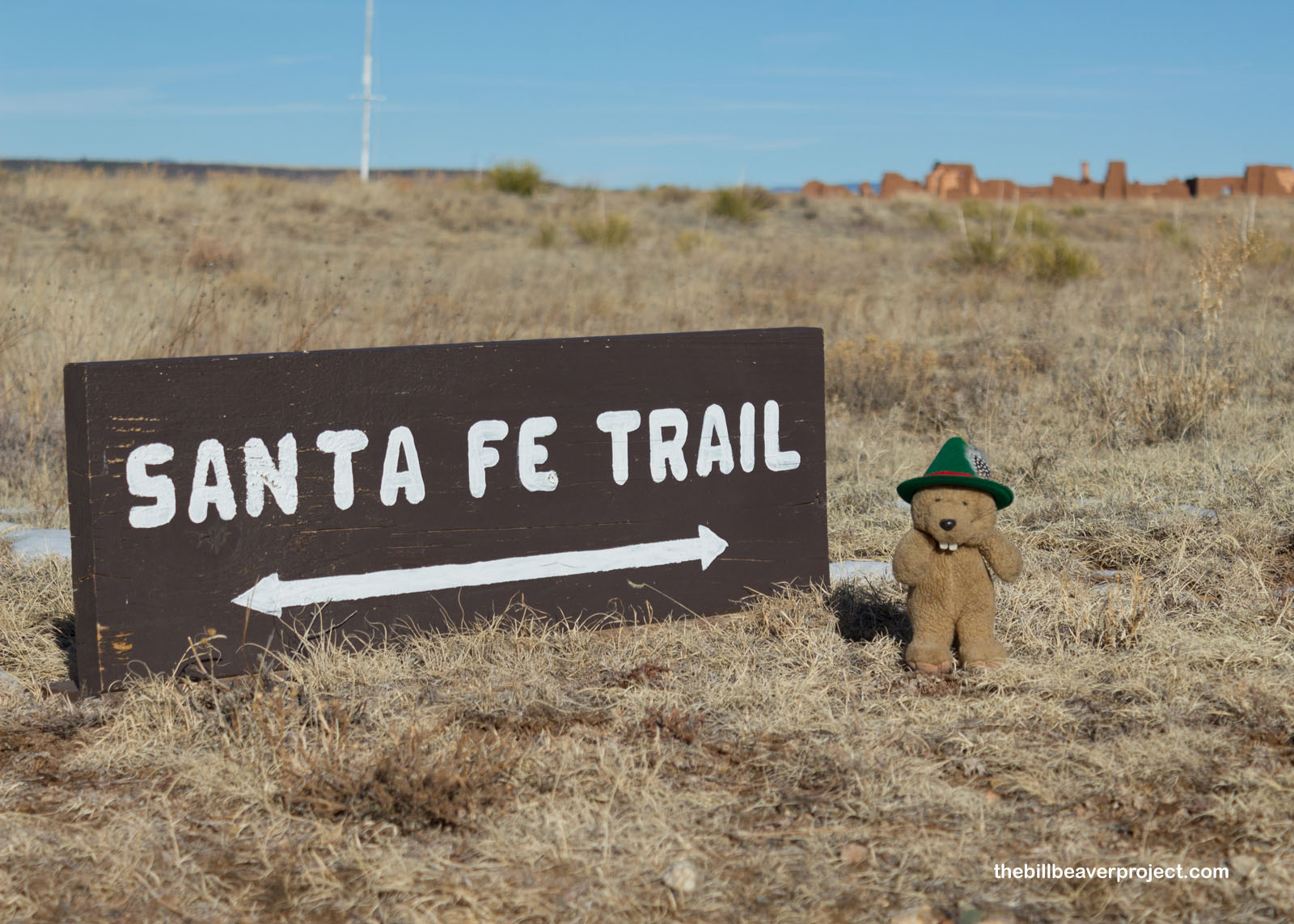 |
This setup only lasted about ten years and worked pretty well at repelling attacks by local Native American tribes, but once the Civil War broke out, the fort got made over in a star shape with earthen fortifications meant to repel cannons! This star shape has eroded a lot over the years and may only be visible from the air, but on this oddly warm February day, I had to make do with looking at the signage!
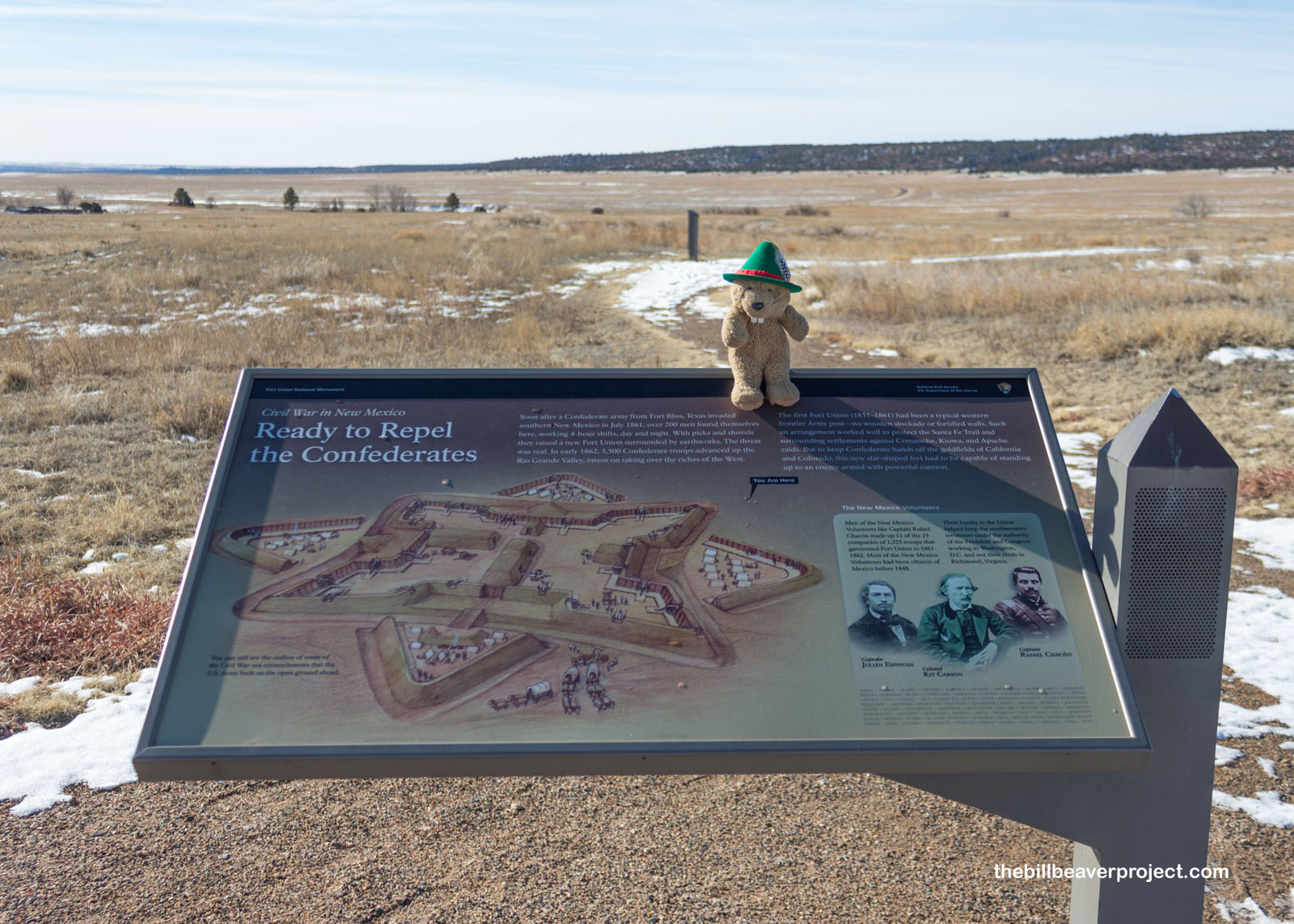 |
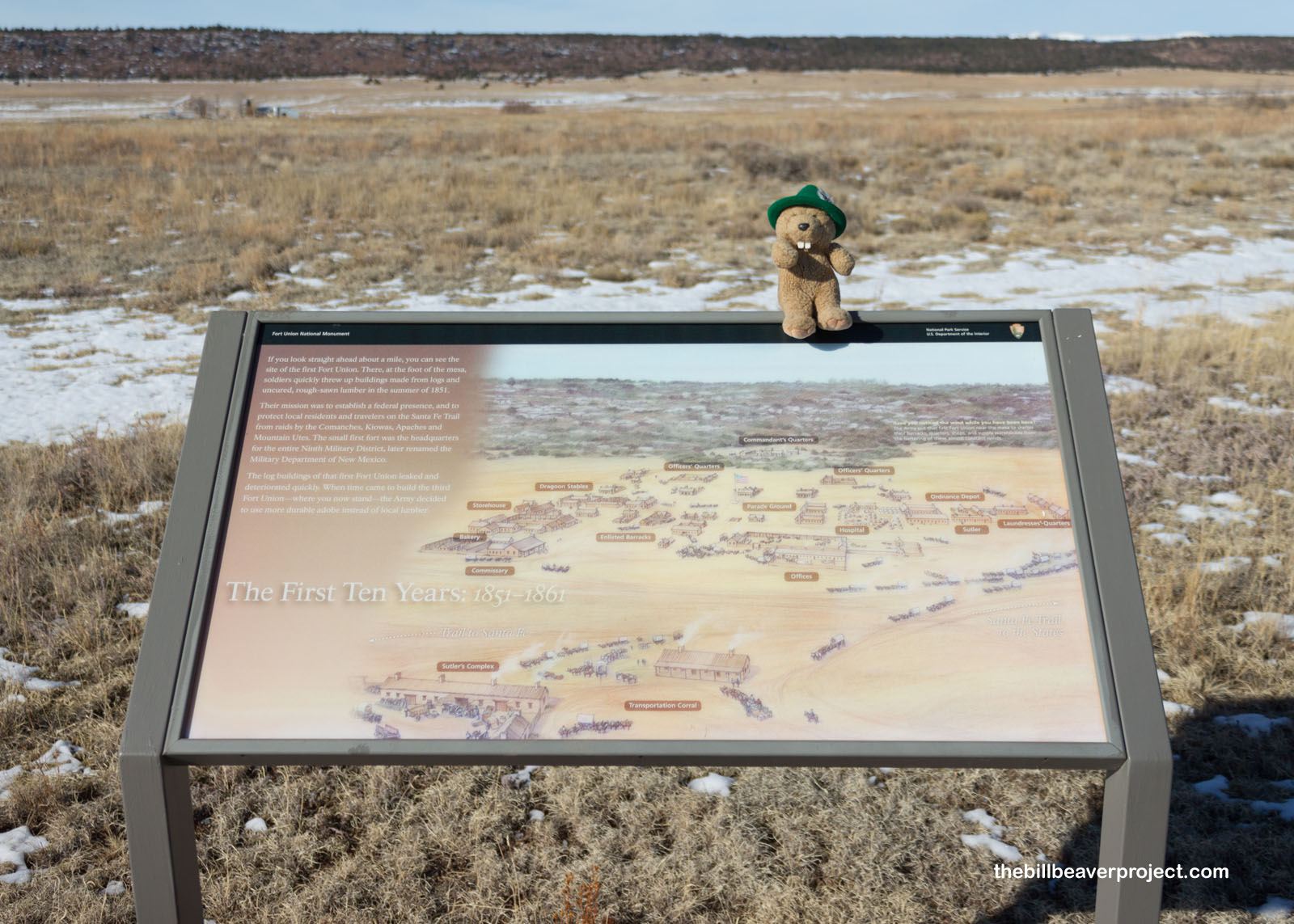 |
Much more visible from the ground, though, were the ruins of the old officers’ quarters! These were remnants of the fort’s third incarnation, between 1862 and 1891. The wooden structures got replaced by plaster-coated adobe brick and other fine construction supplies imported along the Santa Fe Trail. Unfortunately for all who lived there, even the officers, the structures were hastily built and leaked a lot! Nevertheless, this approach to building turned Fort Union into the region’s largest military post!
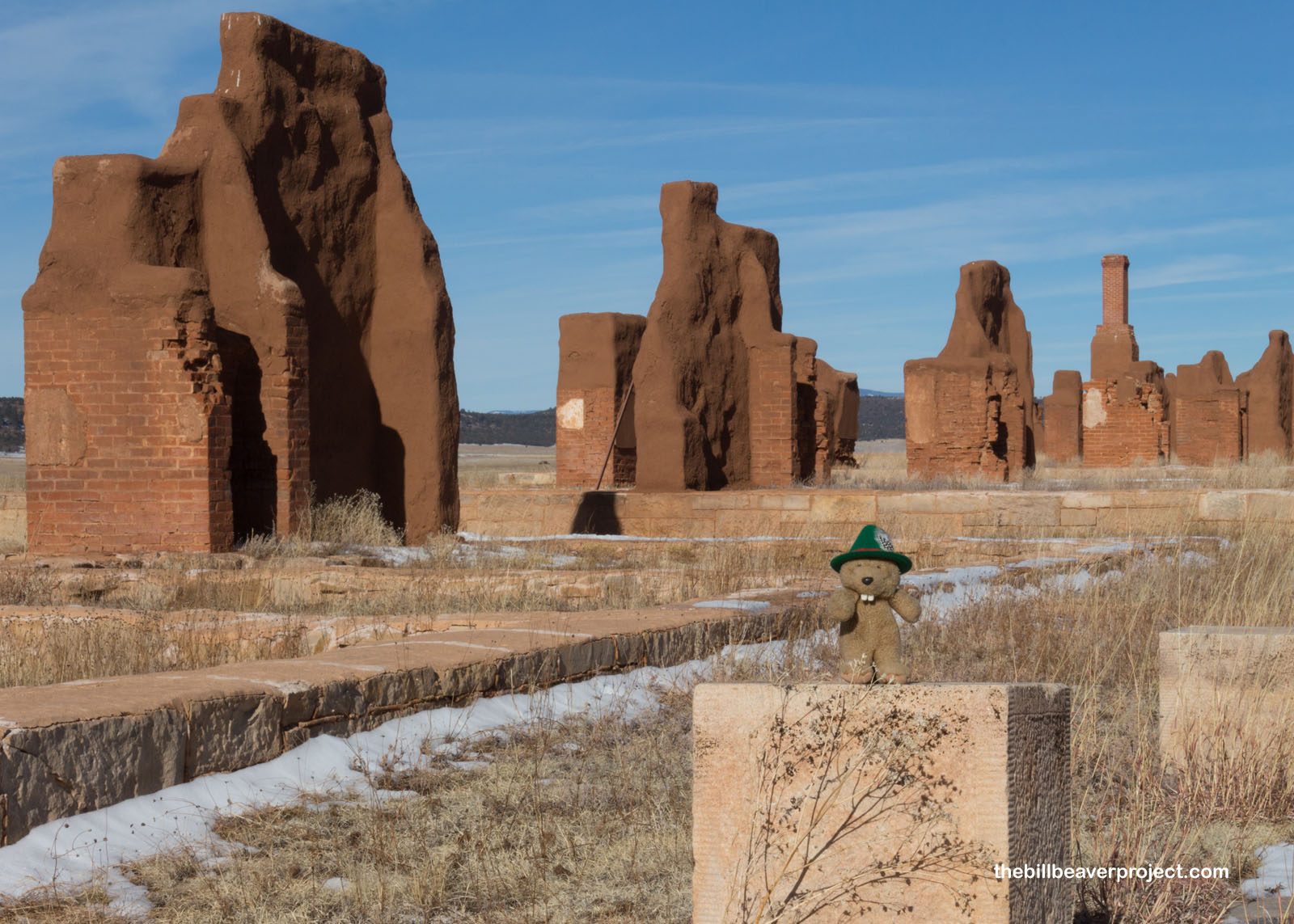 |
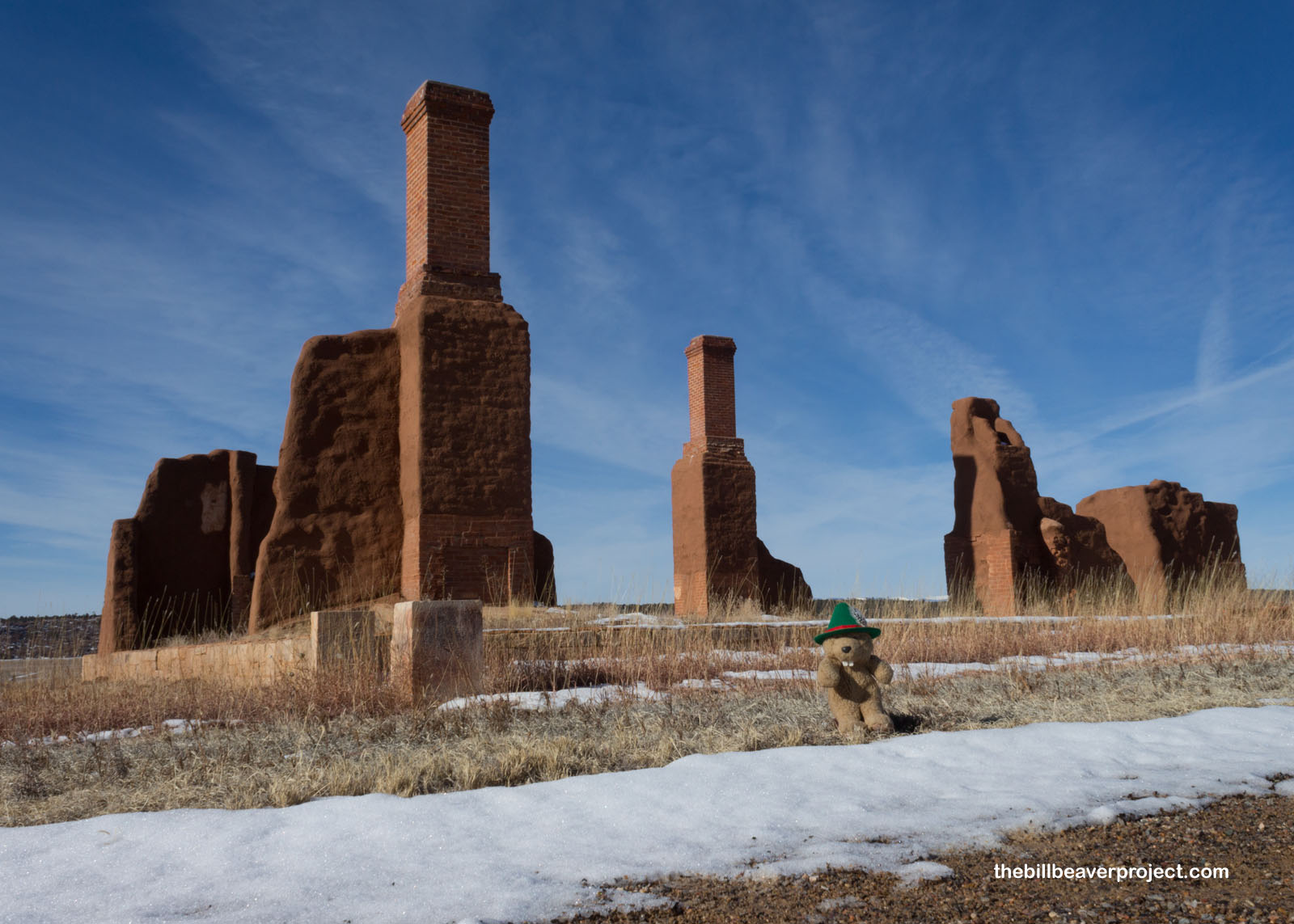 |
Even though it housed four military companies, Fort Union was so much more than a military post! It was also home to the Quartermaster Depot, which supplied the other forts and attended to wagons heading along the Santa Fe Trail!
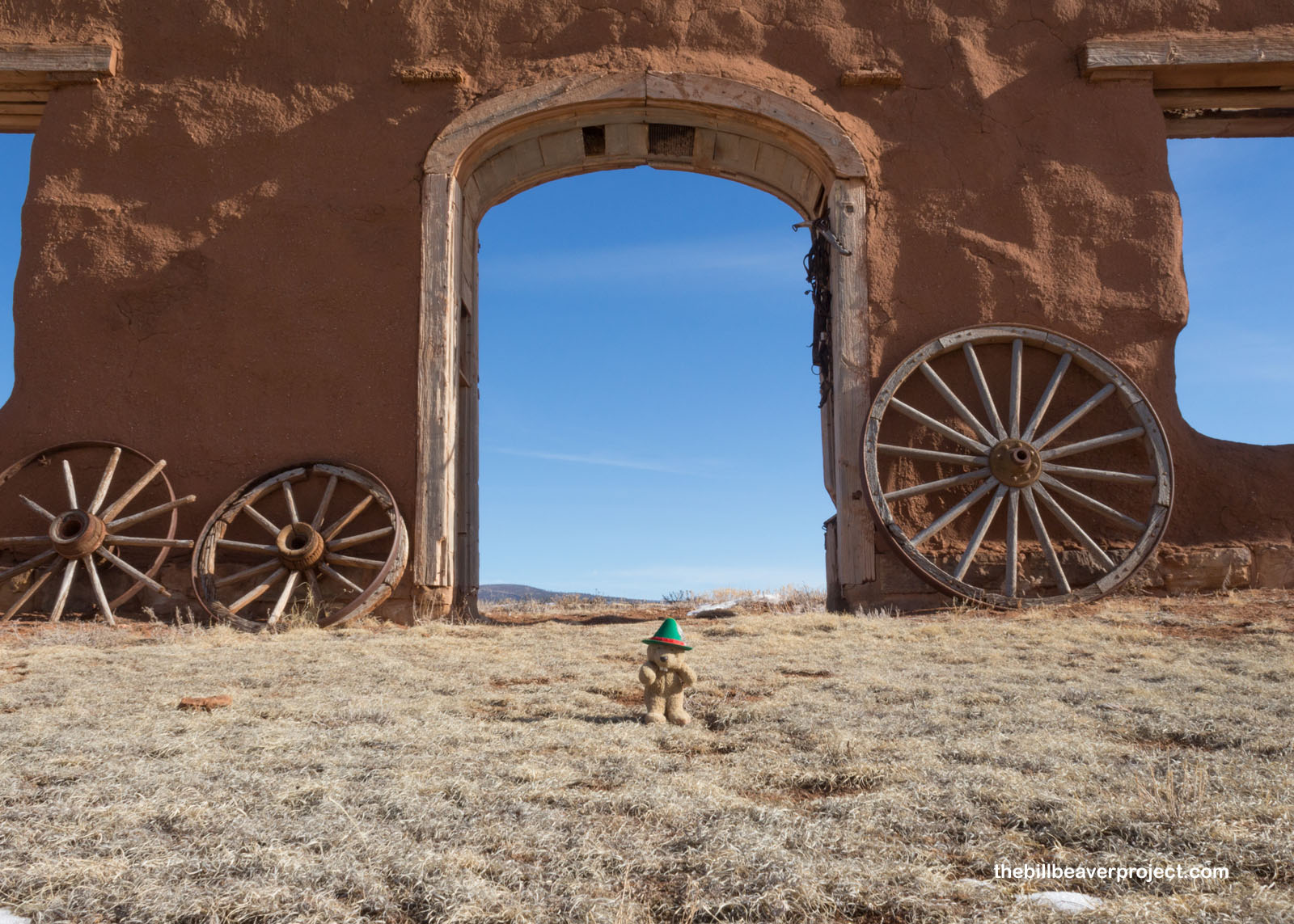 |
Remains of the old transportation and mechanics corrals told the story of wagons arriving in disrepair! The rough roads between Leavenworth, Kansas and Fort Union were hard on wagons, so many pulled into the fort looking to have their wheels and axles repaired, or at the very least, get some food for their oxen. If they didn’t have a military contract, they still had another 80 miles to go to Santa Fe! It was a system that lasted all the way until the railroad pulled through here in 1879 and took away all need for the Santa Fe Trail!
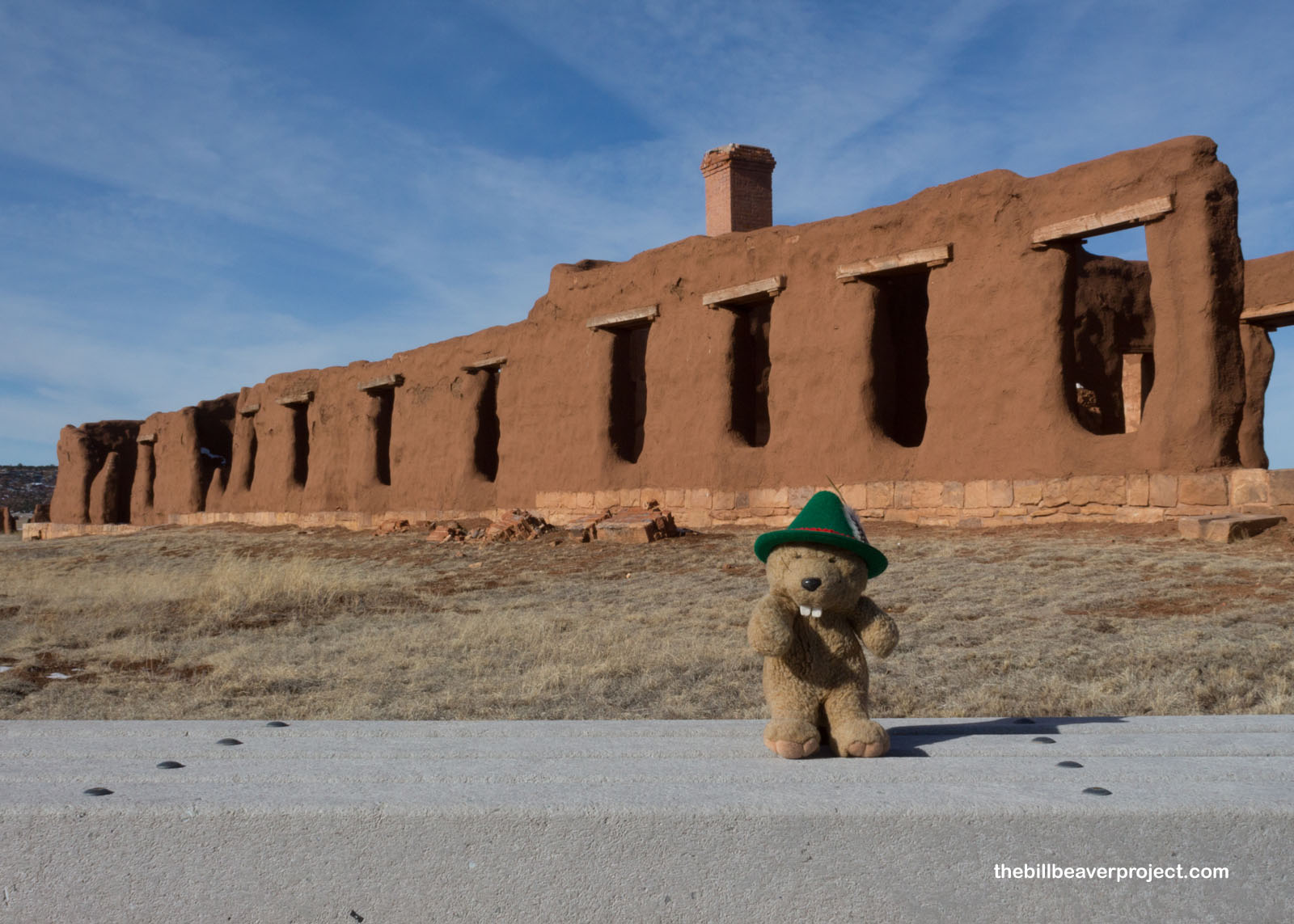 |
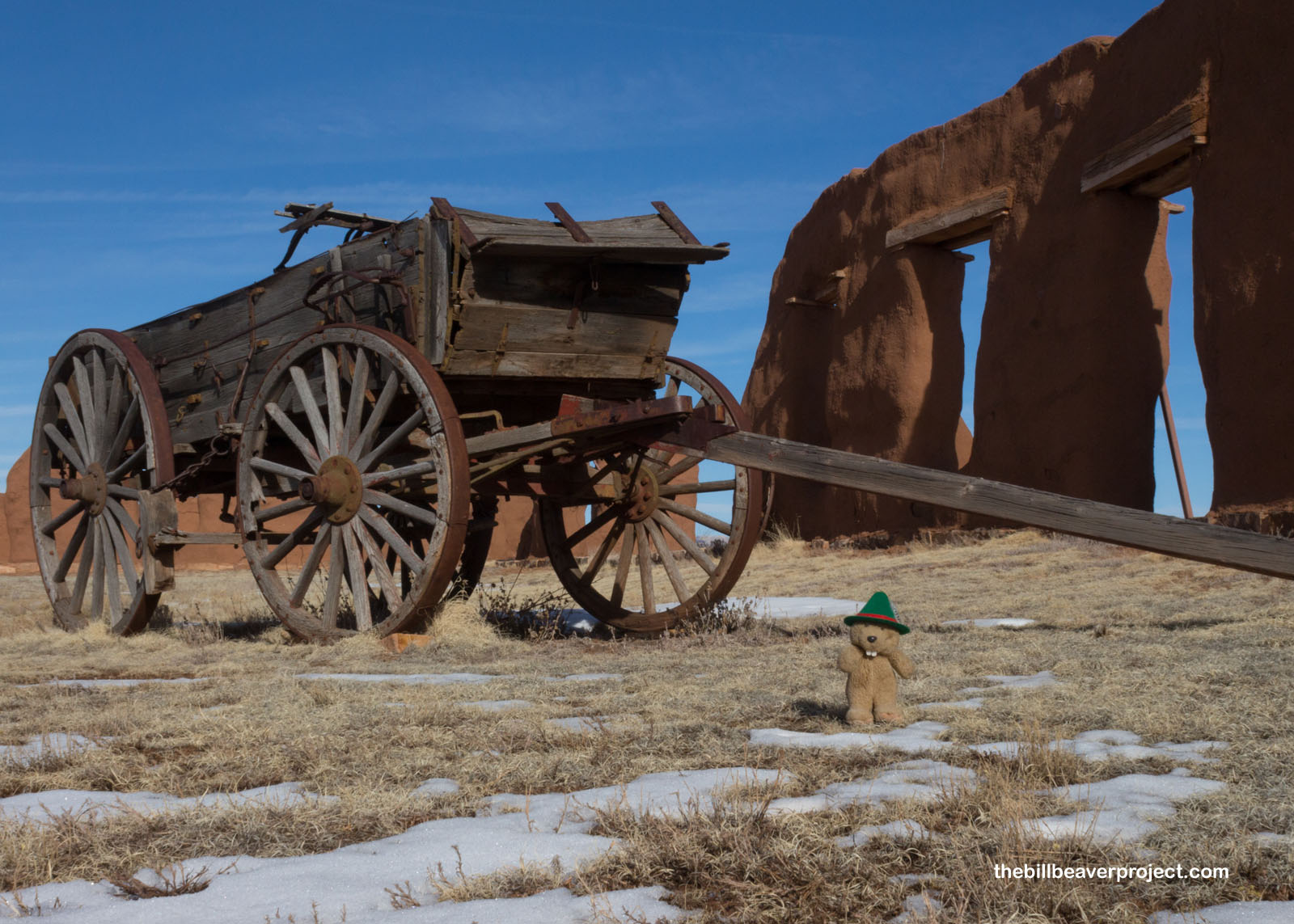 |
I just had to share these neat facts with someone, and since I had neglected him so much the last few years, I rebuilt Señor Castorieti, who was at a loss for what time of year it was! There was snow on the ground, but it was barely sweatshirt weather, not his favorite! He grumbled about the old blizzard of ’67, which I didn’t know he’d been around to witness, but he had high hopes for the next one. That reminded me! I had to get going to the next stop! Señor Castorieti said he’d race me and took off. He’d race me… How absurd!
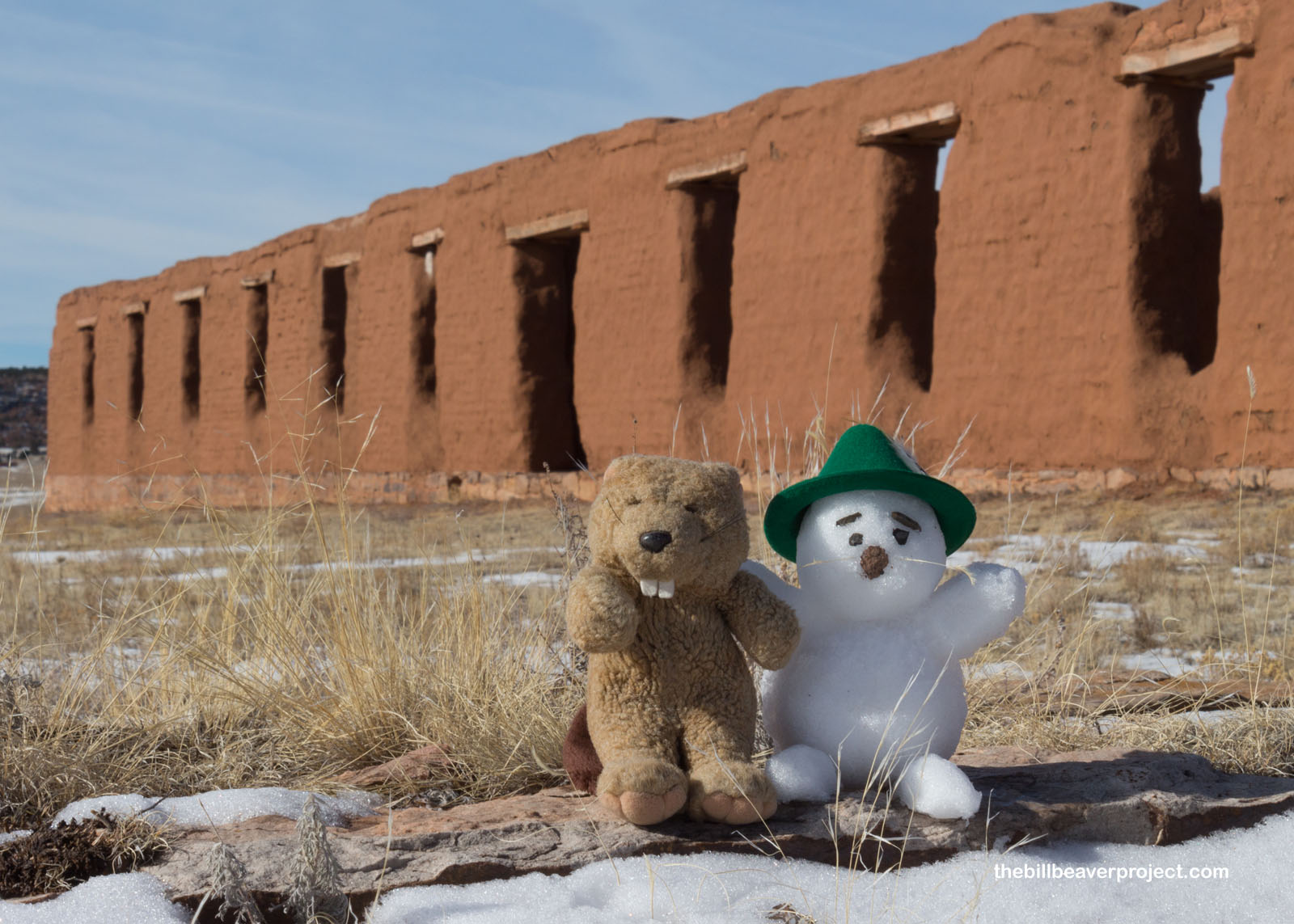 |
About an hour later, I pulled up at Pecos National Historical Park with no sign of Señor Castorieti! I hoped I hadn’t beat him too bad and headed for the visitor center.
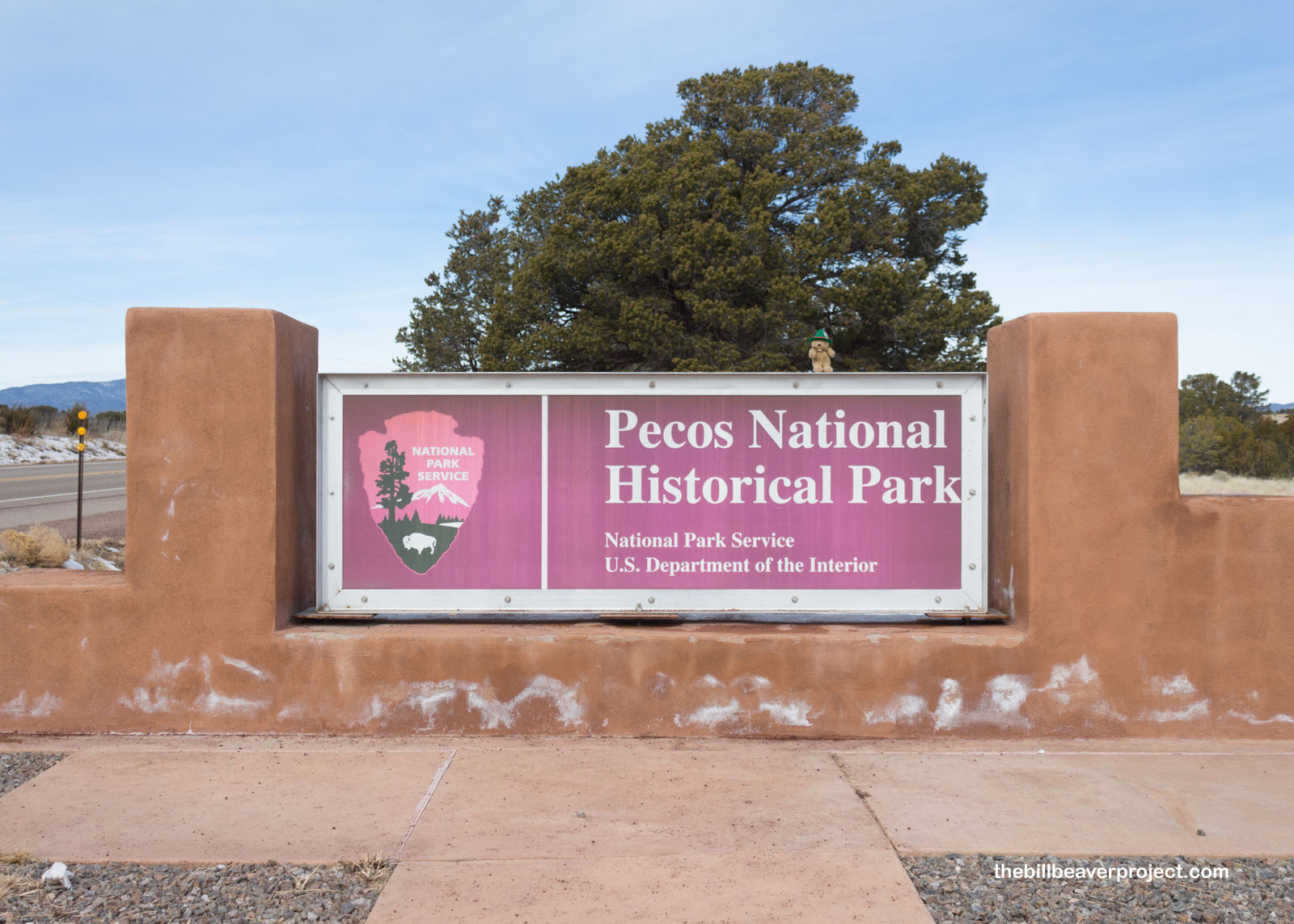 |
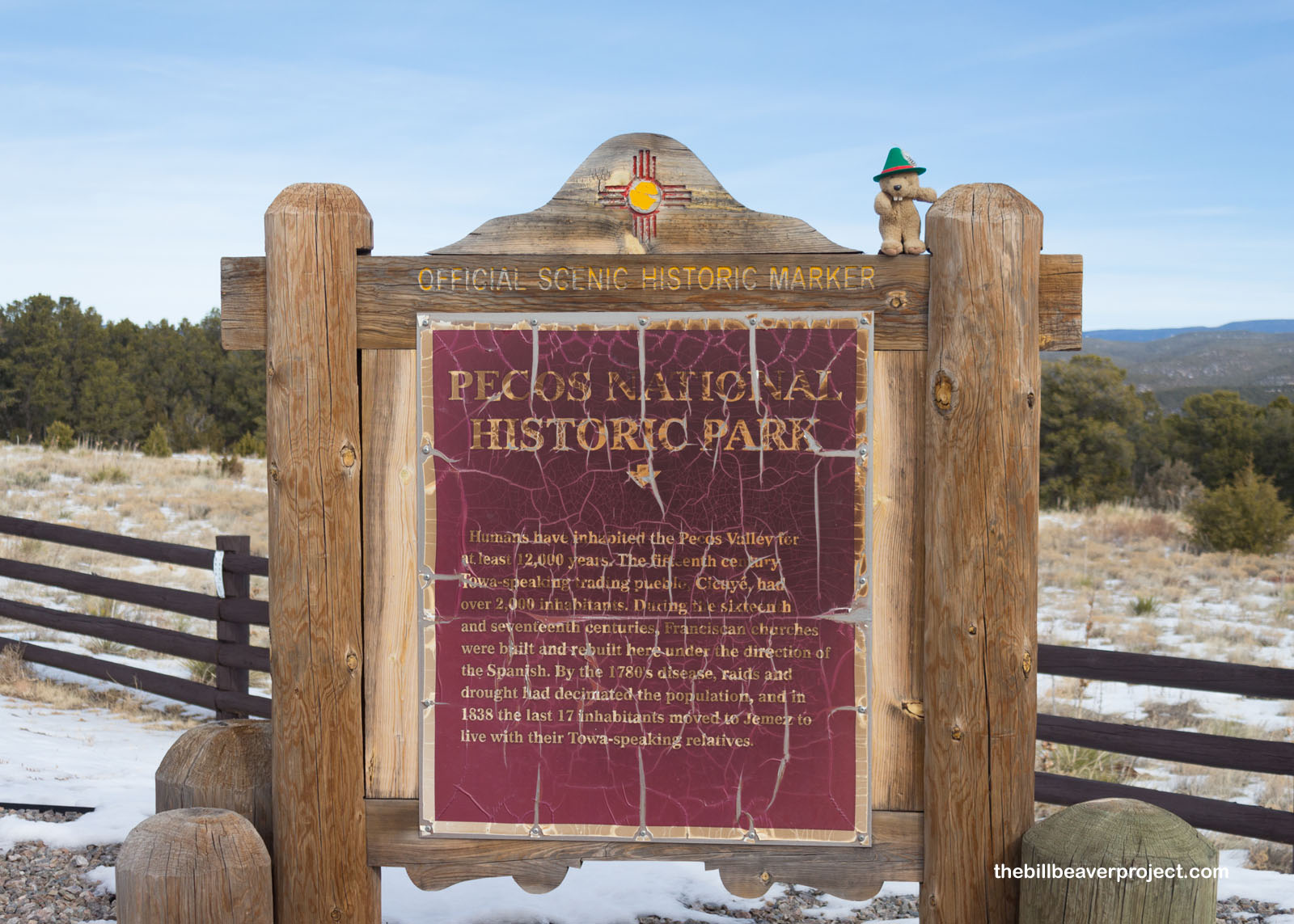 |
As I learned on the Pueblo and Mission Ruins Trail, this was once a booming hub of trade and transportation, dating back to, at least, 11,500 BC! Over 2,000 people lived here, trading for items as far as the Pacific Coast, Mexico, and the Great Lakes! The location between two mountain ranges, in what would later be called the Glorieta Pass, made that possible!
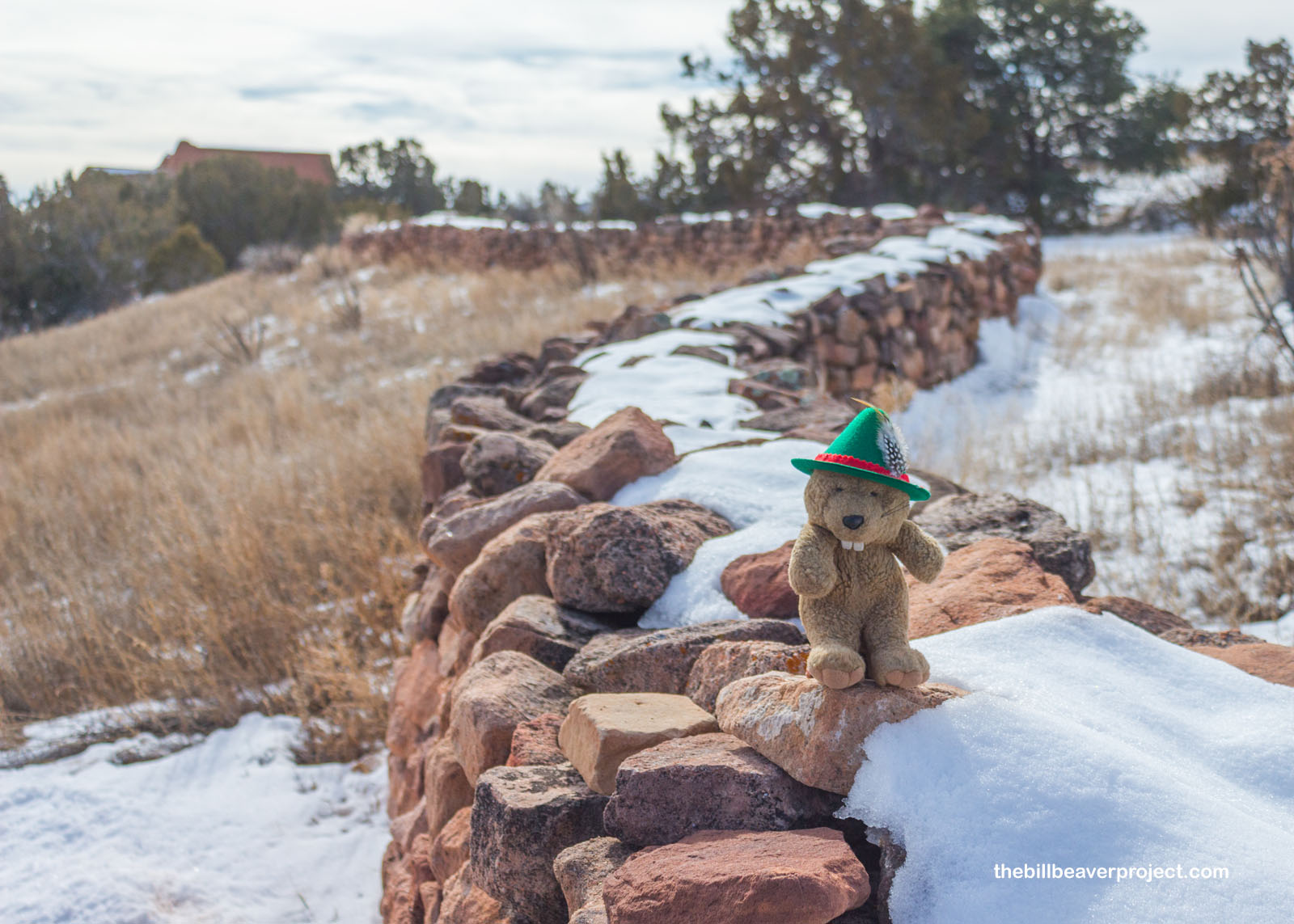 |
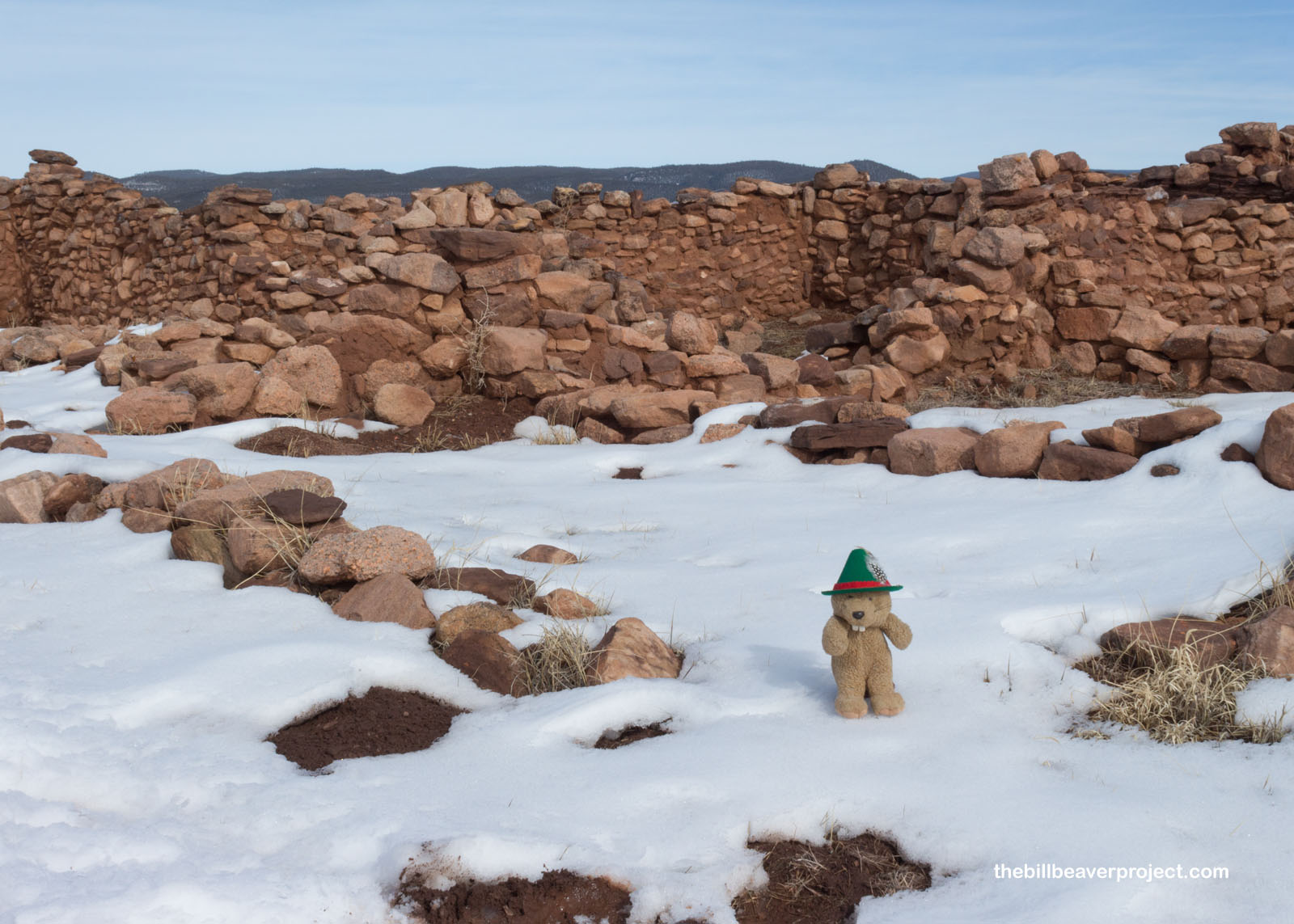 |
Between 800 and 900 AD, folks who had been hunting and gathering began settling down and growing more of their food in set areas. That led them to start building pit houses like the one I visited at Fremont Indian State Park a few years back! Pit houses used the natural insulation of the earth to keep out the heat in summer and the cold in winter! They were accessible by ladder!
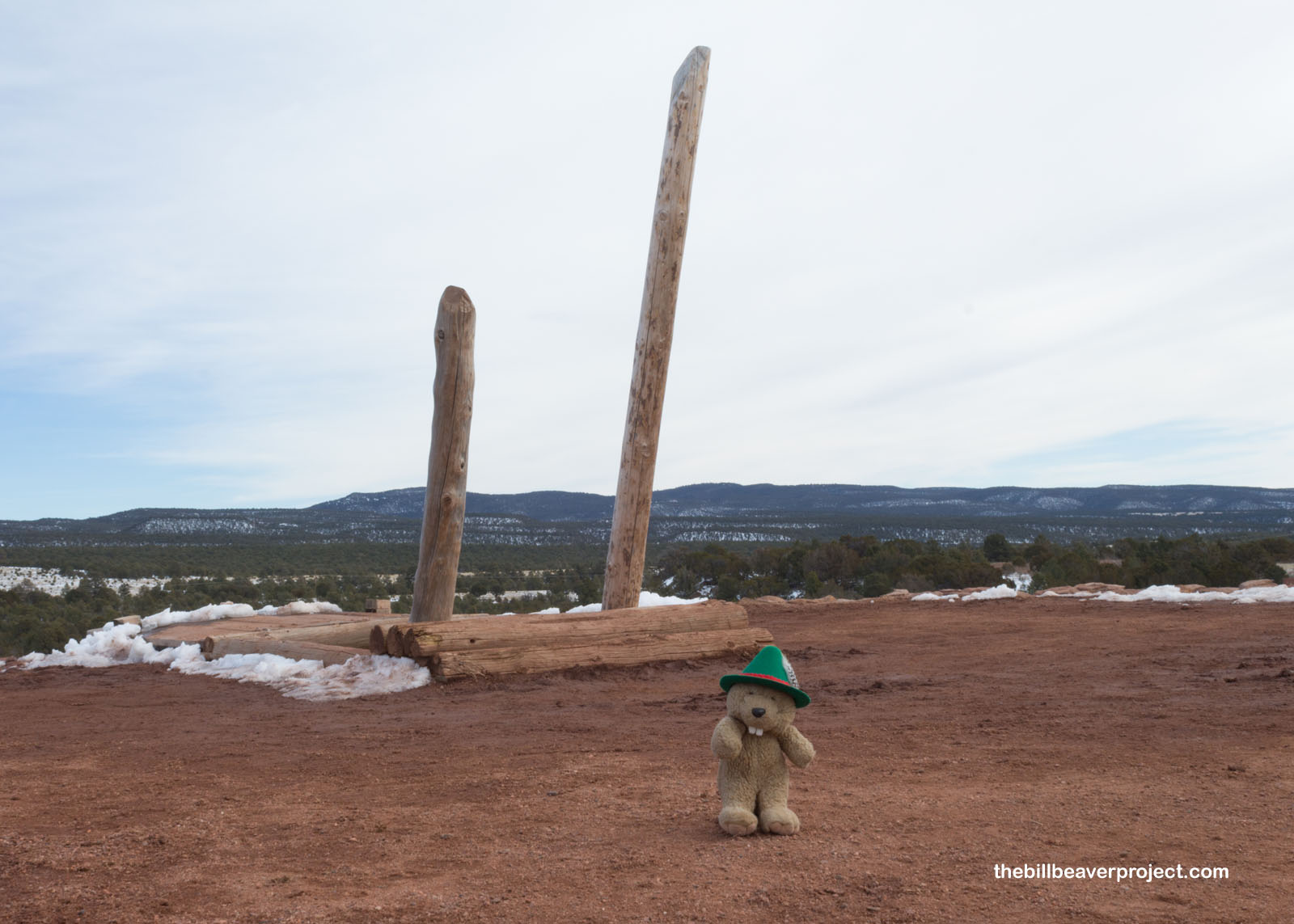 |
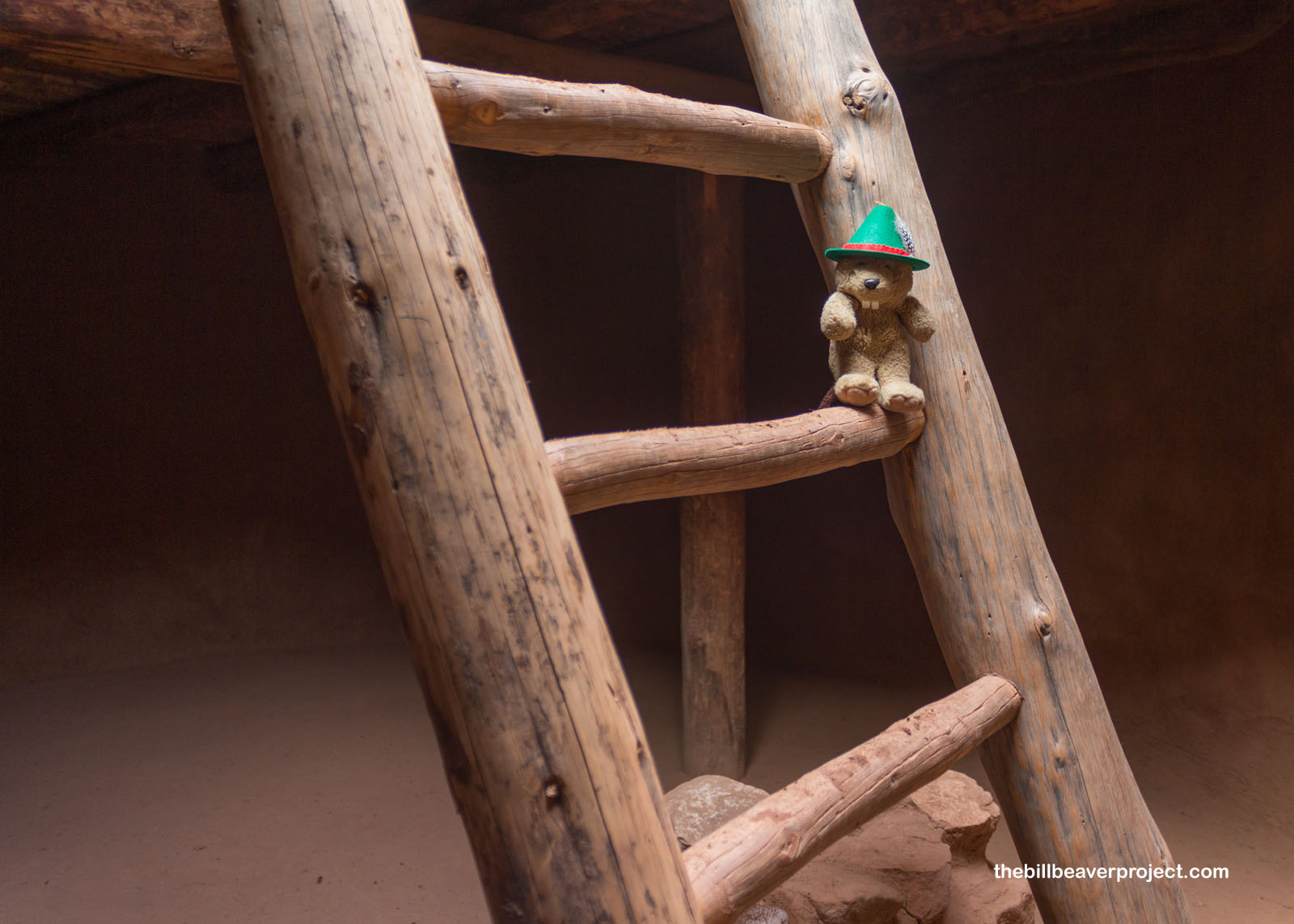 |
One of the neat things about Pecos National Historical Park is that they have recreated one of these pit houses with a fortified ladder for climbing in and out! That gives a great perspective into the lives of those who lived here almost two thousand years ago!
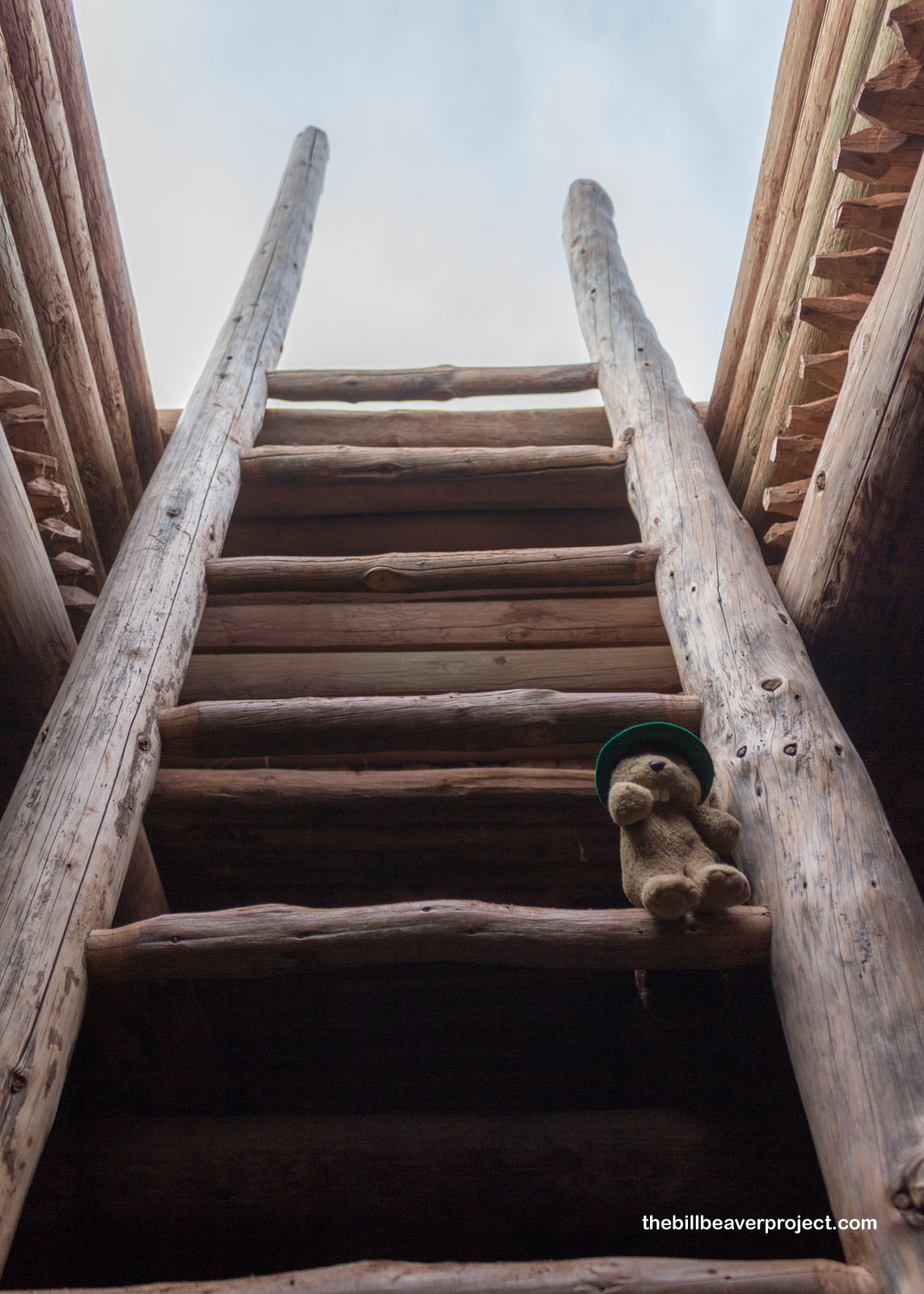 |
From about 1200 to 1600 AD, scattered pueblos prospered, grew, and condensed into one singular, massive pueblo, called Cicuye, which was renowned throughout the region and, like many places in the American Southwest, a tempting target for conquest!
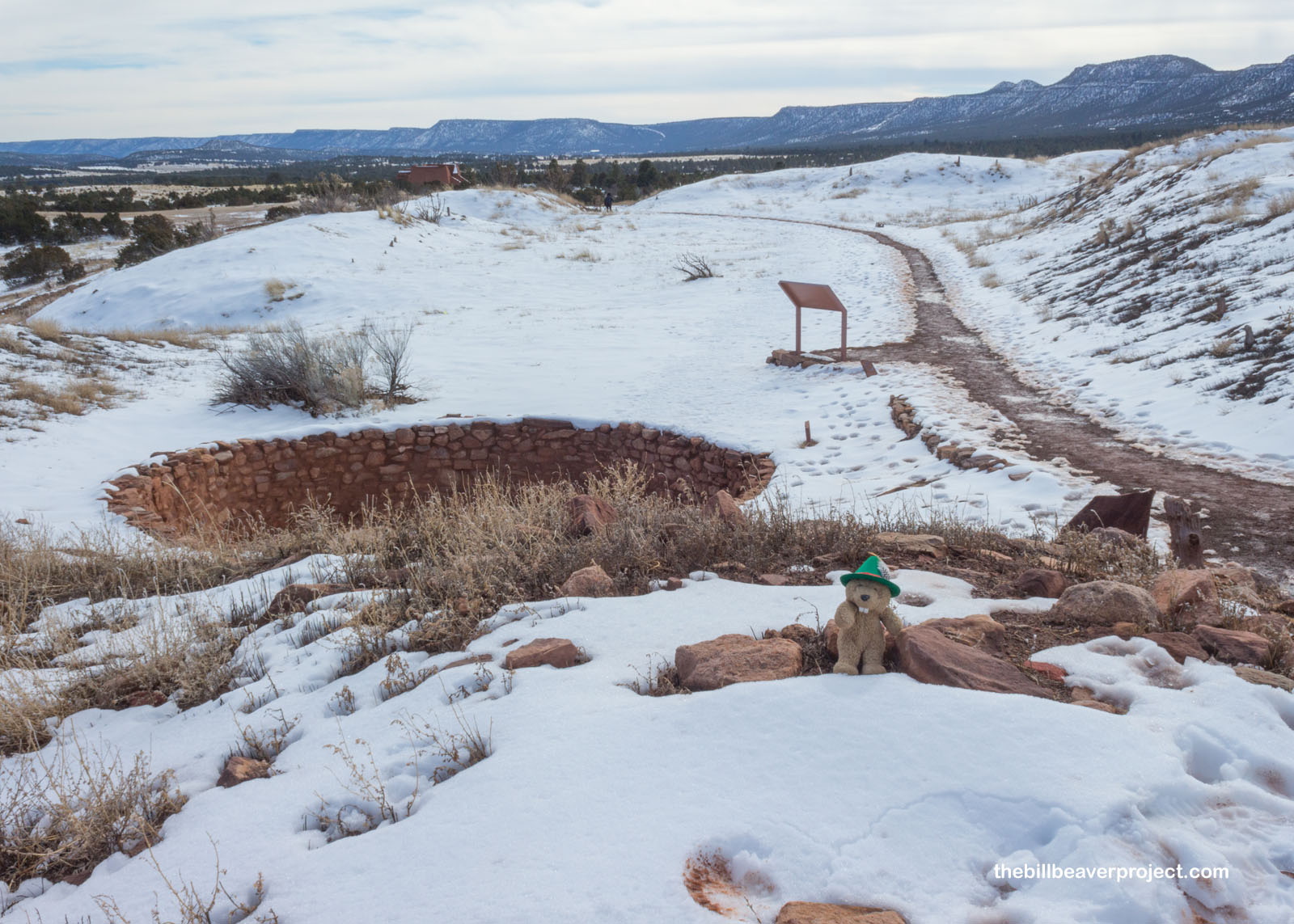 |
The Spanish were interested in this area because of certain myths surrounding the Seven Fabled Cities of Cibola, so after Francisco Coronado’s first expedition here in 1541, Spanish colonizers moved in around 1598 with their one-two punch combo of military and religious control! They renamed Cicuye Pecos and built a massive church that was completed in 1625, then destroyed during the Pueblo Revolt of 1680!
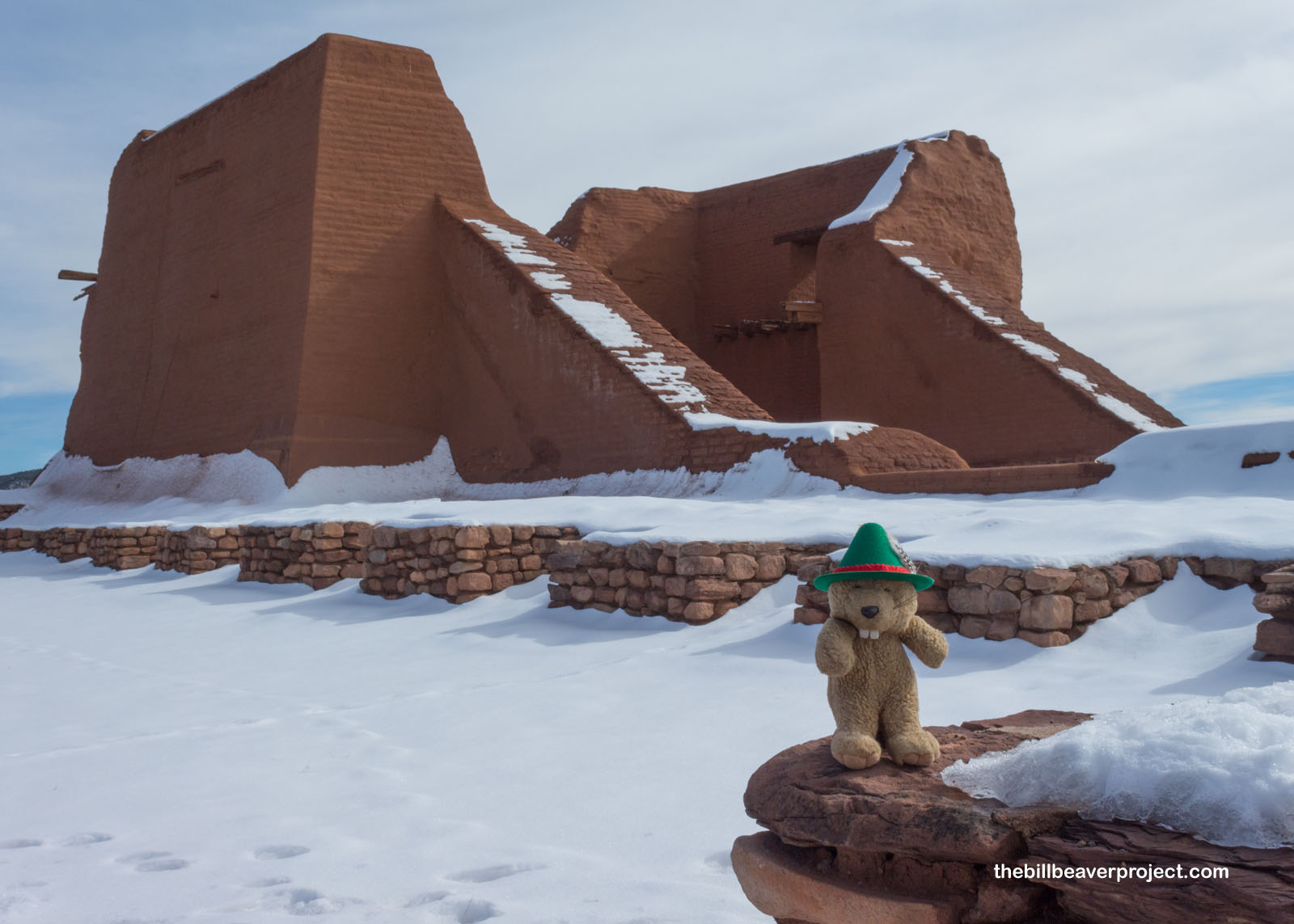 |
It was here in the ruined church that I did finally find Señor Castorieti, huffing and puffing. I was very impressed with how fast he had come, but without lungs, it’s easy to run as quickly as the wind without getting tired. We admired the last remaining church walls, dating back to 1717, before I remembered that I, like the mission-run pueblo, had a train in my future! Bidding a quick farewell to Señor Castorieti, I offered to race him to the train station!
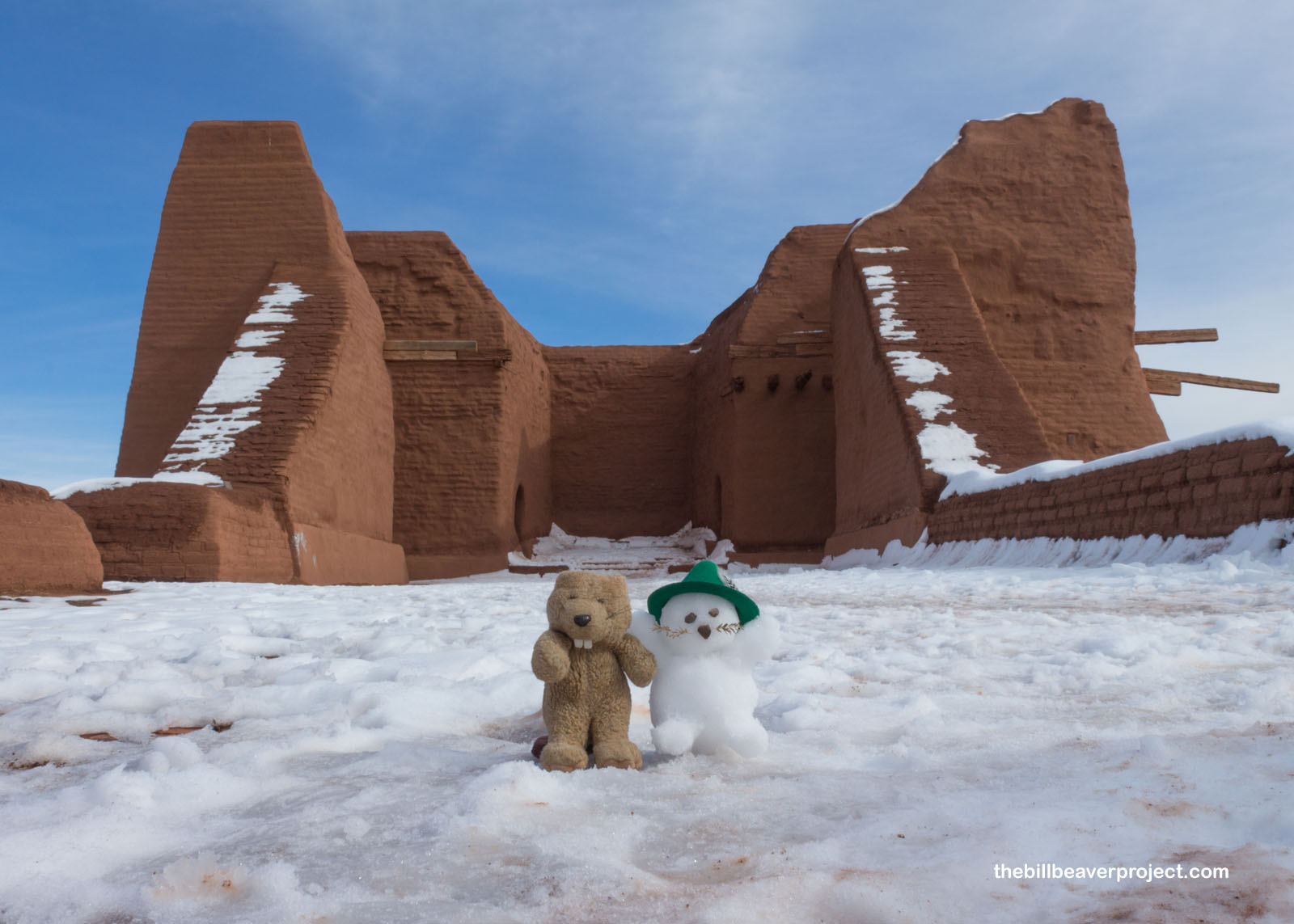 |
Along the way, I passed an important roadside marker pointing out that the Glorieta Pass is on the National Register of Historic Places! That’s because this area was not only a wealth of Native history, but it was also the site of a Civil War battle known as the “Gettysburg of the West!” Here, on March 28, 1862, a Confederate battalion from Texas, bent on taking New Mexico, Utah, and later California, for their cause, were beaten right back out of New Mexico! This was huge for keeping slavery-free territory slavery-free!
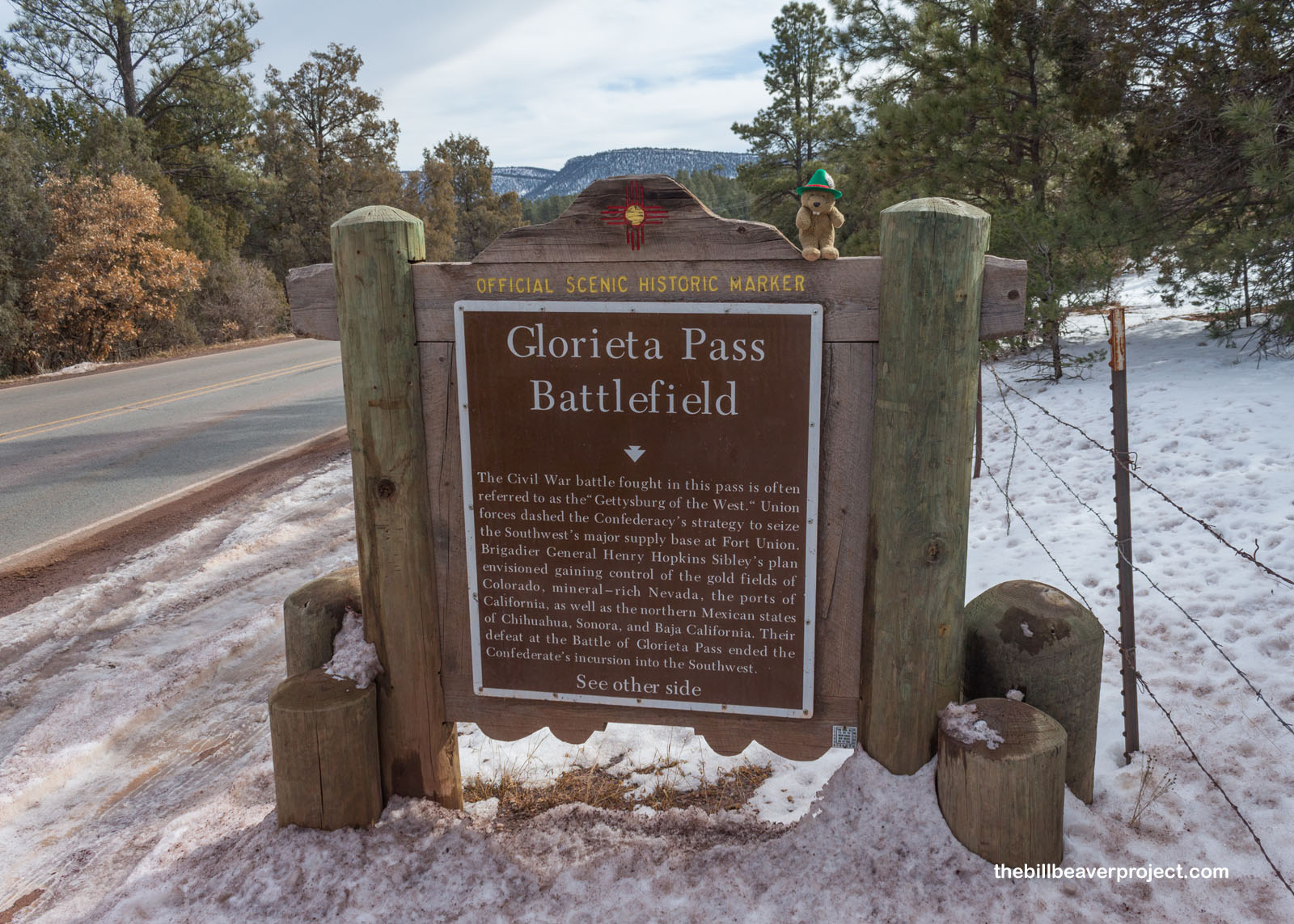 |
I had to wrap up my trip in the opposite direction of the Confederate flight, so I bypassed Santa Fe and headed as quickly as I could back to Albuquerque. Once aboard the train, I was able to relax and think back on everything I’d learned today. It was only after the train pulled out of the station that I realized I’d forgotten to tell Señor Castorieti my seat number! I hoped the small puddle on the stairwell wasn’t him! Poor Señor Castorieti…
Have a fortuitous day!

 Previous Day |
Total Ground Covered: 541.9 mi (872.1 km) |
 More 2020 Adventures |
